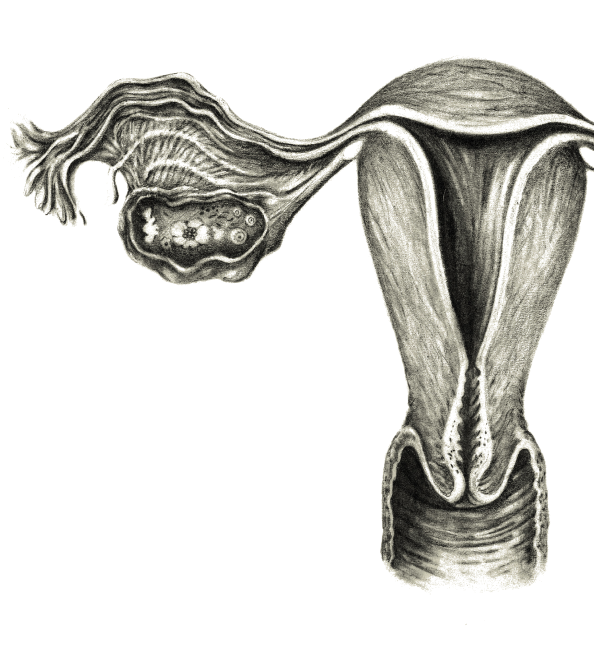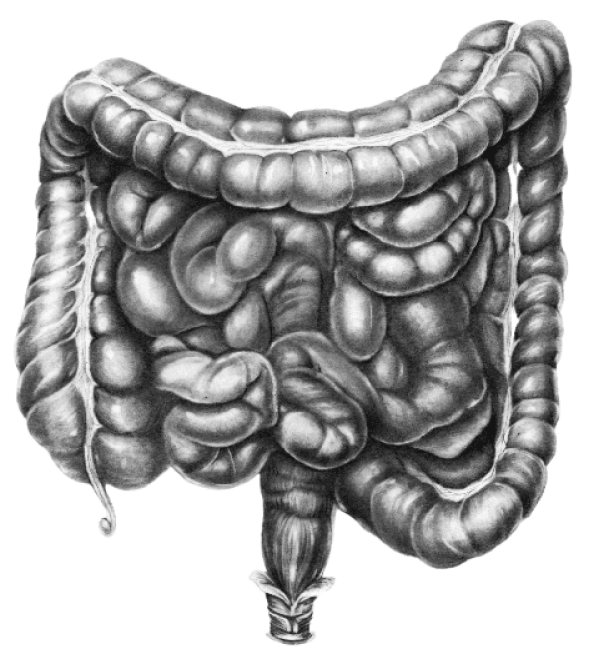
Menopause
Potential of Panax ginseng and its bioactive constituents as a non-hormonal alternative for the alleviation of perimenopausal symptoms.
- Introduction
- Neurological benefits
- Metabolic imbalance
- Bone Health
- Microbiotic effects
- Conclusion
- Bibliographic references
Menopause is becoming one of the key issues to address in women-targeted natural solutions, as its symptoms may affect modern women for about 1/3 of their life.
The drop in hormone levels causes significant imbalances in the endocrine system, which can have heavy repercussions on biological functions – well beyond reproductive mechanisms. The physiological changes that accompany this transition to infertility include a series of well-known symptoms, such as hot flashes, night sweats, sleep disorders, irritability, and reduced libido.
Ginseng, the world-renown elixir of youth and undisputed leader of Asian medicinal plants, has earned a solid reputation for the prevention of age-related discomforts; a centuries-old notoriety now backed up by an increasing number of scientific studies.
Interestingly enough, ginsenosides – the bioactive triterpene fraction of ginseng – do not demonstrate significant estrogenic activity despite having a very similar structure to that of steroid hormones. Ginseng's bioactive constituents could nevertheless be of real interest in the management of menopausal discomfort symptoms through alternative routes of action.
Menopausal discomfort symptoms include a variety of neurological issues, among which important mood swings and persistent sleeping issues. Although hormonal changes are at the source of these discomforts, their resulting metabolic cascades – serotonergic, GABAergic or even BDNF levels – could also constitute potential targets for non-estrogenic treatment strategies aiming at improving postmenopausal women well-being.
Some specific rare ginsenosides have an interesting effect in this respect. The Rg5/Rk1 tandem (bioactive forms of Rb1) has been identified as beneficial for sleep enhancement through GABAergic and serotonergic signalling [3]. To a similar extent, Rg3 (another bioactive form of Rb1) has also been reported to impact sleep through GABAergic activity [4]. In addition, it should be noted that Rg3 has been identified as an “anxiolytic ginsenoside” by several studies [5-7].
Finally, ginsenosides Rg5 and Rg3 have also demonstrated significant anxiolytic activity through BDNF activation [8-9]. BDNF is crucial in postmenopausal women as it is initially stimulated by oestradiol and is therefore potentially under-expressed during the menopausal transition. In addition to mood and neuroprotection -related benefits, BDNF can also be of interest for the prevention of neurodegenerative diseases such as Alzheimer's, to which menopausal women are more susceptible.
Menopause is traditionally associated with an increased risk of metabolic imbalance. This can lead to overweight, dyslipidaemia and, to a lesser extent, to an increased risk of cardiovascular issues. These aspects of metabolic imbalance can be addressed through a variety of physiological pathways – including approaches related to gut microbiota regulation.
For metabolic balance, black ginseng – Panax ginseng roots steam-cooked 9 times or more – is considered the most effective [10]. This higher efficacy is due to an increased relative abundance of specific ginsenosides Rg5 and Rk1, bioconverted from common ginsenosides precursors by the cooking process. Indeed, it has been reported that these compounds positively influence both glycaemic control and lipid metabolism [11-14]. In addition, Rg3 has also been identified as an active ginsenoside for metabolic regulation [15-20].
Oestrogens play a key role in bone health, acting both as a potent anti-resorptive agent and stimulator of osteoblastic differentiation, but also as a regulator of intestinal calcium absorption. The drop in oestrogen levels in postmenopausal women induces a calcium deficiency that results in an increase in osteoclasts-mediated bone resorption rates. This phenomenon leads to a loss of up to 5% of bone mass per year during the menopausal transition, with subsequent risks of osteoporotic fractures [21].
Although hormone therapy is the obvious therapeutic pathway to alleviate this problem, there may also be value in promoting optimal bone health in postmenopausal women through a systematic approach, and ginseng may be a promising avenue.
Indeed, several recent studies have demonstrated the effect of bioactive ginsenosides from red ginseng – notably Rg5, Rk1 and Rg3 – on the differentiation, growth, and proliferation of murine pre-osteoblastic cell lines [22-23]. Rg3 shows potential as a promising treatment for osteoporosis by inhibiting osteoclast genesis and subsequently reducing bone resorption [24-25]. Other mechanisms of action of Rg3 on the alleviation of osteoporosis have also been identified, including increased resistance to oxidative stress, regulation of growth factors and facilitation of bone formation [26].
A growing number of scientific papers report the link between the gut microbiota and hormonal regulation (osteogenic-microbiota axis) [27]. This interaction should therefore not be overlooked in the treatment of menopausal symptoms.
Recently, several active compounds of Panax ginseng [28-29], including specific polysaccharides [30-32] and bioactive ginsenosides such as Rh4 & Rk3 [33-35], have been identified as beneficial for the gut microbiota. While it is too early to state that specific ginseng compounds support postmenopausal women through this microbiotic dimension, a growing body of data points in this direction.
In conclusion, ginseng saponins – and their noble bioactive forms – demonstrate a multi-target action on various menopausal symptoms and could thus help women through their peri-menopausal transition with significant symptomatic alleviation.
Ginseng and its active compounds could therefore constitute an effective, natural, and non-hormonal alternative to improve the existing Nutraceutical offer for (pre-) menopausal women's health and well-being; a new applicative potential for ginseng that deserves further investigation to ensure its safe and free of side effects use in a clinical context.
- [1] Actif's Mag n°75, Printemps 2021 (p.20-21).
- [2] Patisaul, H. B., & Jefferson, W. (2010) – “The pros and cons of phytoestrogens”. Frontiers in neuroendocrinology, 31(4), 400-419.
- [3] Shao J , Zheng X , Qu L , Zhang H , Yuan H , Hui J , Mi Y , Ma P , Fan D (2020) – “Ginsenoside Rg5/Rk1 ameliorated sleep via regulating the GABAergic/serotoninergic signaling pathway in a rodent model.” Food Funct. 2020 Feb 26;11(2):1245-1257. doi: 10.1039/c9fo02248a
- [4] Lee BH, Kim HJ, Chung L, Nah SY (2013) – “Ginsenoside Rg3 regulates GABAA receptor channel activity: involvement of interaction with the gamma2 subunit.” Eur J Pharmacol. 2013 Apr 5;705(1-3):119-25. doi: 10.1016/j.ejphar.2013.02.040. Epub 2013 Mar 13.
- [5] Zhang H, Li Z, Zhou Z, Yang H, Zhong Z, Lou C (2016) – “Antidepressant-like effects of ginsenosides: A comparison of ginsenoside Rb3 and its four deglycosylated derivatives, Rg3, Rh2, compound K, and 20(S)-protopanaxadiol in mice models of despair.” Pharmacol Biochem Behav. 2016 Jan;140:17-26. doi: 10.1016/j.pbb.2015.10.018. Epub 2015 Oct 31.
- [6] Xu JN, Chen LF, Su J, Liu ZL, Chen J, Lin QF, Mao WD, Shen D (2018) – “The anxiolytic-like effects of ginsenoside Rg3 on chronic unpredictable stress in rats.” Sci Rep. 2018 May 17;8(1):7741. doi: 10.1038/s41598-018-26146-5.
- [7] Zhang H, Zhou Z, Chen Z, Zhong Z, Li Z (2017) – “Ginsenoside Rg3 exerts anti-depressive effect on an NMDA-treated cell model and a chronic mild stress animal model.” J Pharmacol Sci. 2017 May;134(1):45-54. doi: 10.1016/j.jphs.2017.03.007. Epub 2017 Apr 12.
- [8] Xu D, Wang C, Zhao W, Gao S, Cui Z (2017) – “Antidepressant-like effects of ginsenoside Rg5 in mice: Involving of hippocampus BDNF signaling pathway.” Neurosci Lett. 2017 Apr 3;645:97-105. doi: 10.1016/j.neulet.2017.02.071. Epub 2017 Mar 1.
- [9] You Z, Yao Q, Shen J, Gu Z, Xu H, Wu Z, Chen C, Li L (2017) – “Antidepressant-like effects of ginsenoside Rg3 in mice via activation of the hippocampal BDNF signaling cascade.” J Nat Med. 2017 Apr;71(2):367-379. doi: 10.1007/s11418-016-1066-1. Epub 2016 Dec 24.
- [10] Metwaly AM, Lianlian Z, Luqi H, Deqiang D (2019) – “Black Ginseng and Its Saponins: Preparation, Phytochemistry and Pharmacological Effects.” Molecules. 2019 May 14;24(10):1856. doi: 10.3390/molecules24101856.
- [11] Jeong YJ, Hwang MJ, Hong CO, Yoo DS, Kim JS, Kim DY, Lee KW (2020) – “Anti-hyperglycemic and hypolipidemic effects of black ginseng extract containing increased Rh4, Rg5, and Rk1 content in muscle and liver of type 2 diabetic db/db mice.” Food Sci Biotechnol. 2020 Jul 1;29(8):1101-1112. doi: 10.1007/s10068-020-00753-3. eCollection 2020.
- [12] Ponnuraj SP, Siraj F, Kang S, Noh HY, Min JW, Kim YJ, Yang DC (2014) – “Amelioration of insulin resistance by Rk1 + Rg5 complex under endoplasmic reticulum stress conditions.” Pharmacognosy Res. 2014 Oct;6(4):292-6. doi: 10.4103/0974-8490.138257.
- [13] Zhu Y, Yang H, Deng J, Fan D (2021) – “Ginsenoside Rg5 Improves Insulin Resistance and Mitochondrial Biogenesis of Liver via Regulation of the Sirt1/PGC-1alpha Signaling Pathway in db/db Mice.” J Agric Food Chem. 2021 Aug 4;69(30):8428-8439. doi: 10.1021/acs.jafc.1c02476. Epub 2021 Jul 26.
- [14] Xiao N, Yang LL, Yang YL, Liu LW, Li J, Liu B, Liu K, Qi LW, Li P (2017) – “Ginsenoside Rg5 Inhibits Succinate-Associated Lipolysis in Adipose Tissue and Prevents Muscle Insulin Resistance.” Front Pharmacol. 2017 Feb 14;8:43. doi: 10.3389/fphar.2017.00043. eCollection 2017.
- [15] Kim K, Nam KH, Yi SA, Park JW, Han JW, Lee J (2020) – “Ginsenoside Rg3 Induces Browning of 3T3-L1 Adipocytes by Activating AMPK Signaling.” Nutrients. 2020 Feb 7;12(2):427. doi: 10.3390/nu12020427.
- [16] Lee JB, Yoon SJ, Lee SH, Lee MS, Jung H, Kim TD, Yoon SR, Choi I, Kim IS, Chung SW, Lee HG, Min JK, Park YJ (2017) – “Ginsenoside Rg3 ameliorated HFD-induced hepatic steatosis through downregulation of STAT5-PPARgamma.” J Endocrinol. 2017 Dec;235(3):223-235. doi: 10.1530/JOE-17-0233.
- [17] Lee S, Lee MS, Kim CT, Kim IH, Kim Y (2012) – “Ginsenoside Rg3 reduces lipid accumulation with AMP-Activated Protein Kinase (AMPK) activation in HepG2 cells.” Int J Mol Sci. 2012;13(5):5729-39. doi: 10.3390/ijms13055729. Epub 2012 May 11.
- [18] Park MW, Ha J, Chung SH (2008) – “20(S)-ginsenoside Rg3 enhances glucose-stimulated insulin secretion and activates AMPK.” Biol Pharm Bull. 2008 Apr;31(4):748-51. doi: 10.1248/bpb.31.748.
- [19] Kim KS, Jung Yang H, Lee IS, Kim KH, Park J, Jeong HS, Kim Y, Seok Ahn K, Na YC, Jang HJ (2015) – “The aglycone of ginsenoside Rg3 enables glucagon-like peptide-1 secretion in enteroendocrine cells and alleviates hyperglycemia in type 2 diabetic mice.” Sci Rep. 2015 Dec 17;5:18325. doi: 10.1038/srep18325.
- [20] Kim M, Ahn BY, Lee JS, Chung SS, Lim S, Park SG, Jung HS, Lee HK, Park KS (2009) – “The ginsenoside Rg3 has a stimulatory effect on insulin signaling in L6 myotubes.” Biochem Biophys Res Commun. 2009 Nov 6;389(1):70-3. doi: 10.1016/j.bbrc.2009.08.088. Epub 2009 Aug.
- [21] Santoro, N., Roeca, C., Peters, B. A., & Neal-Perry, G. (2021) – “The Menopause Transition: Signs, Symptoms, and Management Options”. The Journal of Clinical Endocrinology & Metabolism, 106(1), 1-15.
- [22] Muhammad Hanif Siddiqi, Muhammad Zubair Siddiqi, Sungeun Ahn, Sera Kang, Yeon-Ju Kim, Karpagam Veerappan, Dong-Uk Yang, Deok-Chun Yang (2014) – “Stimulative effect of ginsenosides Rg5:Rk1 on murine osteoblastic MC3T3-E1 cells” Phytother Res. 2014 Oct;28(10):1447-55. doi: 10.1002/ptr.5146. Epub 2014 Mar 19.
- [23] Siddiqi MZ, Siddiqi MH, Kim YJ, Jin Y, Huq MA, Yang DC. (2015) – “Effect of Fermented Red Ginseng Extract Enriched in Ginsenoside Rg3 on the Differentiation and Mineralization of Preosteoblastic MC3T3-E1 Cells.” J Med Food. 2015 May;18(5):542-8. doi: 10.1089/jmf.2014.3251. Epub 2015 Mar 12.
- [24] Siddiqi MH, Siddiqi MZ, Kang S, Noh HY, Ahn S, Simu SY, Aziz MA, Sathishkumar N, Jiménez Pérez ZE, Yang DC (2015) – “Inhibition of Osteoclast Differentiation by Ginsenoside Rg3 in RAW264.7 Cells via RANKL, JNK and p38 MAPK Pathways Through a Modulation of Cathepsin K: An In Silico and In Vitro Study.” Phytother Res. 2015 Sep;29(9):1286-1294. doi: 10.1002/ptr.5374. Epub 2015 Jun 8.
- [25] Zhang X, Chen K, Wei B, Liu X, Lei Z, Bai X. (2016) – “Ginsenosides Rg3 attenuates glucocorticoid-induced osteoporosis through regulating BMP-2/BMPR1A/Runx2 signaling pathway.” Chem Biol Interact. 2016 Aug 25;256:188-97. doi: 10.1016/j.cbi.2016.07.003. Epub 2016 Jul 5.
- [26] Song M, Jia F, Cao Z, Zhang H, Liu M, Gao L (2020) – “Ginsenoside Rg3 Attenuates Aluminum-Induced Osteoporosis Through Regulation of Oxidative Stress and Bone Metabolism in Rats.” Biol Trace Elem Res. 2020 Dec;198(2):557-566. doi: 10.1007/s12011-020-02089-9.
- [27] Baker, J. M., Al-Nakkash, L., & Herbst-Kralovetz, M. M. (2017) – “Estrogen–gut microbiome axis: physiological and clinical implications”. Maturitas, 103, 45-53.
- [28] Song MY, Kim BS, Kim H (2014) – “Influence of Panax ginseng on obesity and gut microbiota in obese middle-aged Korean women.” J Ginseng Res. 2014 Apr;38(2):106-15. doi: 10.1016/j.jgr.2013.12.004. Epub 2014 Jan 9.
- [29] Zhou SS, Zhou J, Xu JD, Shen H, Kong M, Yip KM, Han QB, Zhao ZZ, Xu J, Chen HB, Li SL (2021) – “Ginseng ameliorates exercise-induced fatigue potentially by regulating the gut microbiota.” Food Funct. 2021 May 11;12(9):3954-3964. doi: 10.1039/d0fo03384g.
- [30] Wang D, Shao S, Zhang Y, Zhao D, Wang M (2021) – “Insight Into Polysaccharides From Panax ginseng C. A. Meyer in Improving Intestinal Inflammation: Modulating Intestinal Microbiota and Autophagy.” Front Immunol. 2021 Jul 20;12:683911. doi: 10.3389/fimmu.2021.683911. eCollection 2021.
- [31] Huang J, Liu D, Wang Y, Liu L, Li J, Yuan J, Jiang Z, Jiang Z, Hsiao WW, Liu H, Khan I, Xie Y, Wu J, Xie Y, Zhang Y, Fu Y, Liao J, Wang W, Lai H, Shi A, Cai J, Luo L, Li R, Yao X, Fan X, Wu Q, Liu Z, Yan P, Lu J, Yang M, Wang L, Cao Y, Wei H, Leung EL (2021) – “Ginseng polysaccharides alter the gut microbiota and kynurenine/tryptophan ratio, potentiating the antitumour effect of antiprogrammed cell death 1/programmed cell death ligand 1 (anti-PD-1/PD-L1) immunotherapy.” Gut. 2021 May 18:gutjnl-2020-321031. doi: 10.1136/gutjnl-2020-321031. Online ahead of print.
- [32] Li S, Qi Y, Chen L, Qu D, Li Z, Gao K, Chen J, Sun Y (2019) – “Effects of Panax ginseng polysaccharides on the gut microbiota in mice with antibiotic-associated diarrhea.” Int J Biol Macromol. 2019 Mar 1;124:931-937. doi: 10.1016/j.ijbiomac.2018.11.271. Epub 2018 Nov 30.
- [33] Liang W, Zhou K, Jian P, Chang Z, Zhang Q, Liu Y, Xiao S, Zhang L (2021) – “Ginsenosides Improve Nonalcoholic Fatty Liver Disease via Integrated Regulation of Gut Microbiota, Inflammation and Energy Homeostasis.” Front Pharmacol. 2021 Feb 12;12:622841. doi: 10.3389/fphar.2021.622841. eCollection 2021.
- [34] Qu L, Ma X, Fan D (2021) – ”Ginsenoside Rk3 Suppresses Hepatocellular Carcinoma Development through Targeting the Gut-Liver Axis.” J Agric Food Chem. 2021 Sep 8;69(35):10121-10137. doi: 10.1021/acs.jafc.1c03279. Epub 2021 Aug 20.
- [35] Bai X , Fu R , Duan Z , Liu Y , Zhu C , Fan D (2021) – “Ginsenoside Rh4 alleviates antibiotic-induced intestinal inflammation by regulating the TLR4-MyD88-MAPK pathway and gut microbiota composition.” Food Funct. 2021 Apr 7;12(7):2874-2885. doi: 10.1039/d1fo00242b. Epub 2021 Mar 19.






